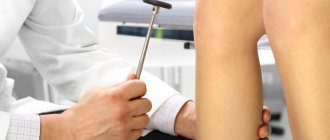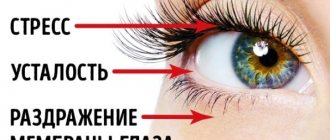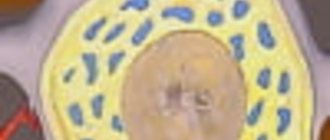The ring finger and little finger on the left hand are numb
Every person has at least once experienced numbness in the little finger and ring finger. Most often, this problem occurs after prolonged sleep, which is not surprising. Many experts note that such a feature may not always indicate the presence of various kinds of diseases and ailments. Most often, fingers become numb due to an uncomfortable bed and awkward postures. These aspects can pinch the nervous system for a long period of time. To get rid of this condition, it is enough to perform several vigorous movements with the brush. This approach allows not only to remove the unpleasant effect, but also to completely restore blood circulation in the hand.
If you experience numbness in your fingers all day long, this is a serious reason to think about your health. You need to urgently consult a doctor and conduct a full examination. Afterwards, the specialist will not only put forward the main diagnosis, but also prescribe a set of procedures to treat the problem. If you do nothing, you can lose control of your fingers in a short period of time. You simply won’t be able to do the things you love or lead your usual lifestyle.
Occupational diseases
Why do the little fingers on both hands go numb? If this happens at the end of the working day, and the work process is associated with fine motor skills of the hands, then you should think about the presence of carpal tunnel syndrome. It develops as a result of repeated repetition of monotonous movements, which in turn leads to muscle overstrain and micro-tears in them. In damaged areas, muscle tissue is replaced by fibrin and scars form. As a result, the muscle canal through which the nerve passes narrows, pain and numbness appear in the little finger, and then in other fingers.
This pathology can occur in people of the following professions:
* secretaries; * hairdressers; * painters; * plasterers; * cooks; * confectioners; * seamstresses; * nurses; * programmers.
In men, tunnel syndrome is more common. The onset of the disease occurs at the age of 40-60 years.
Vibration disease causes numbness of the fifth finger, and subsequently other fingers. Occurs during prolonged exposure to vibrations in production.
Why does numbness occur?
Everyone knows that numbness in the fingers occurs not only as a result of severe pinching of nerve endings, but also as a result of the appearance of diseases. If you do nothing, a lot of trouble can arise. To get rid of discomfort, you need to find out the main cause of numbness in your fingers:
- The main reason is unstable blood supply to the fingers. This effect can occur as a result of a strong narrowing of the vascular system due to low temperatures and prolonged squeezing during sleep. When working for a long time in an uncomfortable position and monotonous movements, heaviness appears, the little finger and ring finger become numb. All this brings a lot of trouble; you need to warm up regularly. Otherwise, you may lose the ability to move your fingers;
- Another common cause is pinching of the nervous system. This effect can occur as a result of prolonged tension in the muscles of the fingers, injury and disease of the elbow joint. If nothing is done, then over time the sensitivity of not only the fingers, but also the hand itself will be lost;
- Experts identify vitamin deficiency - this problem arises as a result of an unbalanced diet, poor lifestyle, lack of large amounts of potassium, magnesium and vitamin complexes. All this can seriously affect not only the general condition of a person, but also the blood supply to the extremities;
- If your fingers become numb, this may indicate the presence of the following diseases: osteochondrosis, arthritis, arthrosis and atherosclerosis. To get rid of all this, you need to consult your doctor;
- Cardiovascular diseases are also a common cause. Because of this, numbness occurs in the hand, and it is impossible to lead a normal lifestyle. If nothing is done, then in a short period of time the disease will spread to the vessels of the brain.
Experts note that numbness in the fingers indicates the presence of chronic diseases:
- Disease and Raynaud's syndrome. In this situation, a sharp spasm of the vascular system occurs, the skin becomes covered with a white tint, and when palpated you can feel intense cold. It is worth noting that such attacks do not last very long, about 20 minutes. But if you observe a longer process, then you need to consult a doctor. If you don't pay attention, you can get tissue necrosis;
- Inflammatory process of joints;
- The occurrence of carpal tunnel syndrome;
- Any stage of diabetes and various endocrine diseases;
- The occurrence of a brain tumor.
To make an accurate diagnosis, a full examination is required using professional equipment and techniques. This is necessary in order to exclude a dangerous disease and prescribe the correct set of procedures. If everything is done correctly, then in a short period of time you can get rid of the problem and restore sensitivity in your fingers.
Which doctor should I contact for numbness?
Numbness is a neurological symptom, so if you complain of numbness, you should consult a neurologist. You must be prepared for the fact that a medical examination is only the first stage in solving the problem. Further instrumental studies will be required: MRI (for radicular syndrome), electroneurography, ultrasound (shows a picture of blood flow in the area under study), EEG (performed if diseases of the central nervous system are suspected). There may also be a need for laboratory tests (complete blood count, blood test for hormones, test for vitamins, etc.).
Treatment for numbness is aimed, first of all, at eliminating the cause that caused it, that is, the disease whose symptom is numbness is subject to treatment. In some cases this may require considerable time.
If you are concerned about numbness in your fingers, arms or legs in general, or any other area of the body, contact the nearest clinic of JSC “Family Doctor”. Our neurologists will determine the cause of the numbness and prescribe adequate treatment. Therapeutic activities may include physiotherapy, physical therapy, massage, reflexology, manual therapy - this entire range of services is provided in the Family Doctor JSC network. Surgical treatment is carried out in the company's high-tech Hospital Center.
Treatment of the disease if the ring finger of the left hand is numb
If the cause of numbness in the fingers is pathological processes, then you need to urgently contact a specialist. They will prescribe a full range of procedures to get rid of the problem. After recovery, you can lead your usual lifestyle and do your favorite things.
To treat the disease, special medications are prescribed to restore blood supply, vitamin complexes and a special diet. Thanks to this approach, you can not only get rid of the problem in a short time, but also prevent it from happening again forever. It is worth noting that all drugs must be taken in accordance with the dosage. For greater effect, experts recommend performing therapeutic exercises for the fingers and massage. If you want to be treated at home, you can use a medicinal bath and herbal decoction.
If after a long sleep you feel numbness in your fingers, you need to shake your hand, clench and unclench your fist several times. Due to such actions, blood supply is restored and numbness goes away. In addition, you can perform a light exercise several times: press on the fingertips one at a time, repeat 10 times.
As for compresses and baths, preparing them is also very simple. You need to take a small amount of pumpkin or salt, add boiled water and let it brew. Then strain thoroughly and apply to the affected area. After a few weeks, the numbness will go away and you can do your favorite things. Experts recommend lubricating the skin with cream after all procedures to moisturize it a little.
Conclusion. And in conclusion, I would like to say that numbness in the fingers is quite common. Especially in elderly and middle-aged people, when the body lacks vitamins and minerals.
Treatment
The quality of diagnosis is of paramount importance, since further treatment is based on the results of the examination.
It can be conservative or surgical. Conservative therapy for osteochondrosis includes medicinal and non-medicinal agents. For pain, analgesics are prescribed in tablets and ointments. If there is no pain syndrome, drugs of several groups are used:
- antispasmodics - Drotaverine, No-shpa, Miolastan, Botox, Sirdalud, Baclofen, etc.;
- means for improving the rheological properties of blood - Actovegin, Trental, Nicotinic acid, Teonicol;
- antioxidants – Mexidol, vitamins E and C, Thioctic acid;
- chondroprotectors – Glucosamine and Chondroitin Sulfate, Hyaluronic acid, Alflutop, Piaskledin, Diacerein.
Conservative treatment of osteochondrosis and its consequences in the form of intervertebral hernias is always complex. The main method of therapy is therapeutic exercises, which is especially effective in combination with physiotherapy.
Isometric kinesiotherapy (motion therapy), massage and underwater hydromassage, acupuncture, traction, procedures with ultrasound and laser, magnetic, vibration and electrical stimulation help improve the condition of the spine. For hernias, mobilization-vacuum therapy has a good effect. Some patients are indicated for psychotherapy sessions and a special diet.
Therapeutic tactics for carpal tunnel syndrome depend on the cause of compression of the ulnar nerve. The operation is needed to remove hematomas, tumors and skin scars that put pressure on the nerve or musculoskeletal canal where it passes. Surgical treatment is also used in the absence of effect from conservative measures.
When the ulnar nerve is pinched, it is very important to eliminate or at least limit the load on the arm, as it increases compression. It is better not to bend the limb, and to make a kind of splint while you sleep at night: wrap a rolled towel around the flexor side of the elbow.
Conservative treatment of neuropathy consists of medications and physiotherapeutic procedures. To stimulate the transmission of neuromuscular impulses, Ipidacrine and Neostigmine are prescribed.
Sometimes only numbness in the hand or fingers “notifies” an impending stroke
When the ulnar nerve is damaged, vasoactive drugs are effective - Nicotinic acid, Pentoxifylline, and B vitamins. Drug treatment is supplemented by electrophoresis, UHF and magnetotherapy. Massage and electrical myostimulation help increase muscle tone.
Diagnosis of diseases
When visiting a doctor, the patient first expresses complaints. Often, in addition to paresthesia of the fingers, he has: coldness of the limb, tingling, pain and some systemic symptoms. The doctor then conducts a survey. Collects anamnesis of the disease and life, finds out the following features:
- when did paresthesia first appear?
- is it constant or paroxysmal;
- what the patient associates the problem with;
- what chronic diseases does he have?
- presence of bad habits;
- hereditary history and other nuances.
After the initial examination, the doctor makes a preliminary diagnosis, on the basis of which additional diagnostic methods are determined. First of all, the patient undergoes an X-ray of the spinal column. Vascular examinations, such as angiography, are then performed. MRI is required to check the condition of the blood vessels in the brain. Electroencephalography is used for the same purposes.
After numbness in the fingers, the right hand can be examined using Doppler ultrasound to get an accurate picture of the condition of the vessels of the limb.
Cervical osteochondrosis as a cause of paresthesia of the upper limbs
Degenerative-dystrophic changes in the intervertebral discs, leading to the gradual destruction and deformation of articular cartilage, are called osteochondrosis. Damage to the cervical vertebrae can cause a number of symptoms that are not initially perceived as vertebrogenic (“coming from the spine”) disorders. These may be headaches, increased muscle tension in the upper back, impaired sensitivity in the extremities (fingers are often affected). In severe cases with a complicated course, more significant pathologies may appear: impaired speech and facial function, pathologies of the temporomandibular joints, jaw deformities.
Cervical osteochondrosisSuch disorders occur against the background of deformation of the spine, which is the central part of the human axial skeleton, as well as compression of nerve endings by osteophytes or hernial protrusions formed as a result of displacement of the disc nucleus (pulp). All clinical symptoms reach their maximum intensity when exposed to provoking factors: a sedentary lifestyle, intense physical activity that does not correspond to the person’s level of fitness, prolonged stay in an uncomfortable position.
Osteophytes
Depending on which finger the numbness and numbness are noted, it can be assumed at the level of which vertebra the compression of the nerve bundle occurred.
Table. Relationship between paresthesia of the limbs and compression of nerve bundles in osteochondrosis.
| Which fingers on your hand go numb? | Which nerves are responsible for innervation (level of location relative to the cervical vertebrae)? |
| Thumb | C4-C6 |
| Little finger | C8 |
| Other fingers (from index to ring) | C3 or C7 |
| All fingers on hand | Damage to nerves at the level of several vertebrae at once is possible (including damage to vertebrae in other parts with combined forms of osteochondrosis). |
Features of cervical osteochondrosis
How to treat?
A neurologist treats osteochondrosis. After a comprehensive diagnosis (radiography, MRI or multislice CT, diagnosis of trigger points and myofascial syndrome, electromyography), the doctor will prescribe the necessary treatment. Unfortunately, osteochondrosis is a chronic disease, and it is completely impossible to cure it, so all treatment comes down to eliminating painful symptoms and preventing further degeneration and deformation of the spine. For patients with paresthesia of the upper extremities, in whom cervical osteochondrosis is diagnosed as the root cause, the following procedures and measures are prescribed:
physiotherapy (ultrasound, magnetic therapy, laser therapy, electrophoresis);
Laser treatment of osteochondrosis
- thermal procedures (thermal applications with paraffin or ozokerite, heating with salt, the use of warming ointments based on camphor, formic alcohol 2%, bee venom);
- medicinal correction (painkillers and anti-inflammatory drugs from the NSAID group, chondroprotectors, muscle relaxants, microcirculation correctors);
- physical therapy and gymnastics;
- massage;
- traction traction of the spine.
Massotherapy
If numbness does not go away after a full course of therapy, other pathologies should be excluded, for example, circulatory diseases or pathologies of the central nervous system.
Numbness of the fingers due to circulatory disorders
Blood is a mobile connective tissue of the body, providing not only nutrition and metabolic processes in cells, but also thermoregulation, as well as oxygen delivery at the cellular level. If blood flows into a certain organ or part of the body in insufficient quantities, various pathologies occur, for example, numbness, coldness, and complete loss of sensitivity. With prolonged disruption of the blood supply to the upper extremities, necrosis may develop, in which limb amputation is used to prevent gangrene and sepsis.
Blood functions
The most common causes of insufficient blood flow into the vessels on the fingers of the right or left hand are:
- blockage (thrombosis) of arteries, including the vertebral and basilar arteries, which run in the neck;
- vascular atherosclerosis (deposition of cholesterol and fats on the walls of blood vessels in the form of plaques against the background of compaction and narrowing of the arterial lumen);
- damage to cerebral vessels.
Brain aneurysm
There can be many reasons for blockage of blood vessels. These include a sedentary lifestyle (hypodynamic disorders), a diet with high consumption of fats and salt, and endocrinological diseases. Patients with tobacco addiction, obesity, high blood pressure, and thyroid dysfunction are also at risk. In women, atherosclerosis often first appears during the postmenopausal period, when serious hormonal changes in the body occur.
Ulnar neuropathyDrug treatment includes the use of plant sorbents, anion exchange resins, Ac-CoA transferase blockers, fibric acid derivatives, and statins.
Note! Clinically significant results in the treatment of circulatory pathologies are achieved in patients who combine the statins fenofibrate with nicotinic acid, fenbutol, tribuspamine, policonazole and vitamins E and A.
Statins
Numbness of the left hand
Paresthesias are very dangerous, since they can appear due to diseases of the cardiovascular system.
Pre-infarction state
The left arm may go numb if a person has angina. The provoking factors are as follows:
- Smoking.
- Wrong nutrition.
- Stress.
- Fatty and spicy foods.
The symptom begins with the ring finger. Then he moves to the little finger.
There are other symptoms that may indicate a pre-infarction condition:
- Pain in the heart, radiating to the collarbone or jaw.
- Anxiety, cold sweat, fear of death.
- Weakness.
- Insomnia.
- Dizziness.
The fingers on the right hand are going numb: be careful, stroke!
Prolonged numbness and complete loss of sensation in the fingers of the right hand may be a sign of left-sided ischemic brain damage (stroke). This pathology is characterized by gradual development (within 24 hours), therefore, if you seek help in a timely manner, this form of brain damage can be recognized at the initial stage, which significantly increases the chances of successful recovery and preservation of vital functions and abilities.
How does an ischemic stroke occur?
There are several types of ischemic stroke.
Table. Types of ischemic stroke (cerebral infarction).
| Stroke form | Causes | Features of the clinical course |
| Hemodynamic | Coronary heart disease, a sharp decrease in blood pressure, slow heart rate (bradycardia), atherosclerosis, narrowing and defects of cerebral vessels. | Hemodynamic stroke can begin both after intense physical activity and at rest (for example, during night sleep, when a natural decrease in blood pressure occurs). Numbness in the fingers gradually spreads to the entire hand, reaching the elbows and shoulder girdle. The person may also feel severe nausea, headache and dizziness. |
| Atherothrombotic | Blockage of the cerebral arteries. | The attack begins mainly during sleep and increases gradually (from the onset of the attack to the development of acute symptoms can take from several hours to a day). Tingling and numbness on the right hand maintain their intensity and localization throughout the attack. |
| Cardioembolic | Valvular heart defects, rheumatic and bacterial endocarditis, formation of parietal thrombi in the cavities of the heart, complete or partial blockage of the arteries of the brain. | The attack begins during the patient’s physical activity and is characterized by suddenness and rapid progression. Neurological symptoms (pain in the right hand, numbness and tingling in the fingers) are dominant in this type of stroke. |
Types of stroke
Important! A distinctive feature of a left-sided ischemic stroke is the occurrence of neurological and painful symptoms on the right side: in the right arm, collarbone, scapula, etc.
Urgent Care
It is important for relatives of people suffering from cardiovascular diseases to know how to behave if signs of a stroke appear. The main rule is that you need to contact an ambulance as quickly as possible, since transporting the patient on your own may be ineffective (not all clinics and hospitals are equipped to provide competent assistance for ischemic brain lesions)
The algorithm for providing emergency assistance before the arrival of the team consists of the following actions:
It is unacceptable to give water and drink to a person with signs of a stroke, since the swallowing function can be paralyzed, which will lead to aspiration of the respiratory tract and death from suffocation;
First aid for stroke
- if vomiting occurs, the person must be turned on his side (put a folded jacket, towel or pillow under the shoulders and head);
- The patient should not be given drugs that lower blood pressure, since too sharp a decrease in blood pressure can cause the end of blood perfusion (flow) into the vessels of the brain.
Symptoms of a stroke
All objects that could harm the blood vessels (belts, watches, bracelets) should be removed from the patient’s body, the chest should be freed from clothing, and fresh air should be supplied to the room.
What to do if your little finger and ring finger are numb
The treatment regimen for numbness of the upper extremities is selected depending on the background of the disease against which this symptom developed.
If the numbness was due to physiological reasons, no treatment is required; the numbness usually goes away when the causative factor, for example, excessive load on the limb, is eliminated.
In other cases, the patient may be prescribed:
- Drug therapy: non-steroidal anti-inflammatory drugs, analgesics, vitamin-mineral complexes, etc.
- Physiotherapy: laser, magnetic, ultrasound therapy, phonophoresis, massage, physical therapy, acupuncture.
- Correction of the musculoskeletal system: in some cases it is necessary to immobilize the wrist (for example, using an orthosis).
If the problem cannot be resolved with conservative therapy, the patient may need to undergo surgery.
General recommendations
If numbness occurs due to prolonged work at the computer or other activities, you must:
- Take regular breaks, relaxing your hands as much as possible.
- Perform special exercises for fingers and hands.
If your hands are numb, it is recommended to give up bad habits, get a good rest (ensure a good night's sleep), strengthen your immune system, and avoid hypothermia. Patients may need to limit their salt intake; it is recommended to enrich their diet with vegetables, fruits, dairy products, and nuts.
Folk remedies
| Traditional method of treatment | Explanations |
| Hand baths | Baths with honey, milk, infusions and decoctions of medicinal herbs for 10-15 minutes, as well as contrast baths (usually the procedure is recommended to be carried out once a day for at least 10 days) |
| Tincture of pickled cucumbers and hot peppers | The product is rubbed into the affected limb before going to bed (3 chopped pickles, 3 hot peppers, 500 ml of vodka, leave for 1 week and filter) |
| Boiled pumpkin | Boiled pumpkin is applied to the brush, which is covered with polyethylene and woolen cloth on top |
| Compress with honey | Numb hands can be lubricated with honey, wrapped in polyethylene and a warm cloth, and left the compress overnight |
Useful gymnastics
Muscles and joints need to be constantly developed to strengthen. Tissue trophism and blood circulation in the body are constantly getting worse. Such exercises are easy to perform and can be performed without difficulty. They need to be performed regularly.
The most difficult exercises are bringing the phalanges of the fingers into a lock, squeezing into a fist and unclenching. It is necessary to stimulate blood flow through infrared pulse treatment.
Gymnastics is created from exercises that create the desired load on the hands and fingers. This way you can stretch all parts of your hands. To get rid of the feeling of discomfort caused by numbness in the fingers, you need to perform the following exercises:
Touch your thumb to your other fingers for 5 minutes. You need to use both hands. You need to alternately bend the 1st and 2nd phalanges, and then the finger itself so as to get to the center of the palm. Perform body movements with your hands, resting them on a table or edge of the bed. You need to get to your feet, put the fingers of both hands in a lock behind your back, wait a minute. Similar procedures are carried out 3 times in a row. Stretch your arms along the body, clench your fists at least 80 times. The palms are joined and the fingers are crossed. You need to complete 30 approaches. When people approach the wall, you need to rise on your toes and stretch your arms up. You need to remain in this position for about a minute. Repeat exercises 5 times. Hold clenched fists for 2-3 minutes, then straighten
Such repetitions are done approximately 5 times a day. Carefully turn your head in different directions 20 times.







